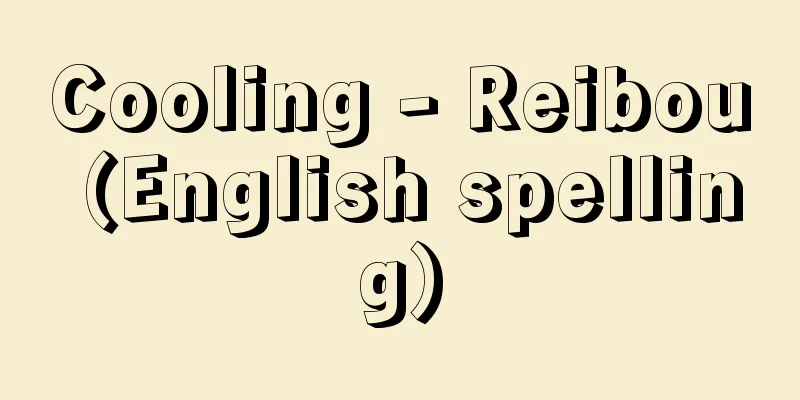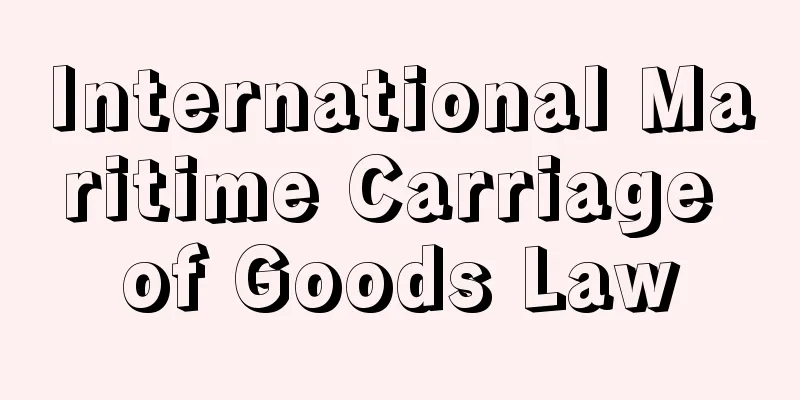Industrial Education
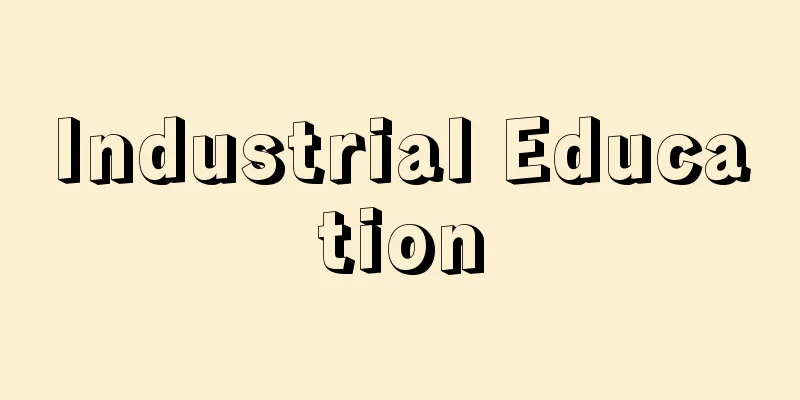
|
It refers to education that teaches the knowledge, skills, and attitudes necessary to work in agriculture, manufacturing, commerce, fisheries, and other industries, and is a part of vocational education. The Industrial Education Promotion Act enacted in 1951 stipulated that industrial education should be provided in junior high schools, high schools, and universities, and later included technical colleges. However, in the general concept, vocational education in high schools forms the core of industrial education. [Nobuhiro Miyoshi] HistoryAs the term "industrial education" suggests, it was organized in response to changes in the industrial structure during the Industrial Revolution. In Great Britain, a leading country in the Industrial Revolution, the need for education to deal with international competition in industrial technology began to be emphasized when the Great Exhibition was held in London in 1851. The report that triggered this, "Industrial Education in the Countries of Continental Europe," by Playfair, revealed that at that time industrial education, which was centered on industry but also included agriculture and commerce, had already been established in Germany, France, and other countries. In Japan, Western industrial education was introduced in the 1870s under the terms of arts education and craft education. In the 1880s, the term vocational education came into widespread use, and a series of vocational education laws were enacted, starting with the Regulations for Vocational Supplementary Schools in 1893 (Meiji 26). Vocational education included industrial schools, apprenticeship schools, agricultural schools, commercial schools, mercantile marine schools, and vocational supplementary schools, and later vocational technical colleges were added. In the early Meiji period, industrial education was promoted under the control of the competent ministries in charge of promoting industry and commerce. First, the Ministry of Industry and the Ministry of Education started industrial education, while the Hokkaido Development Commission and the Ministry of the Interior started agricultural education. When the Ministry of Agriculture and Commerce was established, it managed education in agriculture, forestry, commerce, mercantile marine, and other areas. In 1882, the Ministry of Education fought with the Ministry of Agriculture and Commerce over school management rights, and forced the Dajokan to accept its demand for the unification of education and politics. This increased the consistency and efficiency of educational administration, but on the other hand, it had the negative effect of detaching industrial education from the practical aspects of industry. [Nobuhiro Miyoshi] Current StatusIn the age of technological innovation after the Second World War, countries competed to educate human resources in science and technology. For example, the UK published the Technical Education White Paper in 1956, and in 1963 embarked on a fundamental reform of higher education with the Robbins Report. In Japan, too, there was a significant expansion of science and engineering faculties at universities, technical colleges, and industrial departments at high schools, and industrial education developed. However, agricultural education in the primary industry gradually fell into a slump, and even securing successors to the agricultural industry became difficult. Future industrial education must be structured to develop people who can flexibly respond to changes in the industrial structure. Industrial education in schools must provide students with a sense of mission in their careers, a spirit of originality and ingenuity, basic industrial knowledge and skills, and a social scientific understanding of the various conditions surrounding industry. It is also important to improve industrial education facilities to provide a variety of educational opportunities that meet the needs of individuals even after they have completed their school education. What is particularly important is that as we move to an advanced information and communications society, we are being forced to respond to the information society, including school education and lifelong education. In particular, technical universities and technical colleges are being called upon to establish information-related departments and to promote the development of information processing education systems throughout the education sector. [Nobuhiro Miyoshi] "National Institute for Educational Research (ed.) 'A Hundred Years of Modern Japanese Education, 9: Industrial Education 1 (Late Edo Period to 1915)' and 'A Hundred Years of Modern Japanese Education, 10: Industrial Education 2 (1915 and After)' (1973)" ▽ "A Hundred Years of Industrial Education, compiled by the Ministry of Education (1986, Gyosei)" ▽ "Japanese Women and Industrial Education, by Miyoshi Nobuhiro (2000, Toshindo)" [Reference] | | | | | | | | |Source: Shogakukan Encyclopedia Nipponica About Encyclopedia Nipponica Information | Legend |
|
農業、工業、商業、水産業その他の産業に従事するために必要な知識、技術、態度を修得させるための教育をいい、職業教育の一部をなす。1951年(昭和26)制定の産業教育振興法では、産業教育は中学校、高等学校、大学で行うとされ、その後高等専門学校もつけ加えられた。しかし、一般的な概念では、高等学校の職業科の教育がその中心をなしている。 [三好信浩] 沿革英語ではインダストリアル・エデュケーションindustrial educationとよばれることからもわかるように、産業革命期の産業構造の変化に対応して組織化されるようになった。産業革命の先進国イギリスでは、1851年にロンドン万国博覧会を開催したとき、産業技術の国際競争に対処する教育の必要が説かれ始めた。その引き金となったプレイフェアの『ヨーロッパ大陸諸国の産業教育』と題する報告書では、この当時すでにドイツ、フランスなどにおいて、工業を主体として農業や商業も含み込んだ産業教育が成立していたことが明らかにされた。 日本では明治10年代から欧米の産業教育が、技芸教育とか職工教育とかの用語でわが国に紹介された。明治20年代になると、実業教育の用語が多用されるようになり、1893年(明治26)の実業補習学校規程を皮切りに、一連の実業教育法制が成立した。実業教育のなかには、工業学校、徒弟学校、農業学校、商業学校、商船学校、実業補習学校などが含まれ、のちには実業専門学校も加えられた。明治初年の産業教育は、殖産興業を担当する主務省管理のもとで推進された。まず工部省と文部省は工業教育を、開拓使と内務省は農業教育に着手し、農商務省が創置されると、農業、林業、商業、商船などの教育を管理した。文部省は、1882年に農商務省と学校管理権をめぐって争い、太政官(だじょうかん)に学政一元化の主張を認めさせた。そのことは、教育行政の一貫性と能率性を高めることになったが、その反面において、産業教育が産業の実地から遊離するという弊害が生まれた。 [三好信浩] 現況第二次世界大戦後の技術革新の時代には、各国とも競って科学技術人材の教育に力を注いだ。たとえばイギリスでは、1956年に技術教育白書を出し、63年にはロビンズ報告書で高等教育の抜本的改革に乗り出した。日本でも、大学の理工系学部、高等専門学校、高等学校工業科などが大幅に拡充され、工業教育が発展した。しかし、第一次産業の農業教育はしだいに不振に陥り、農業後継者の確保にさえ支障が生じた。 これからの産業教育は、産業構造の変化に柔軟に対応できるような人間形成のための教育構造が図られねばならない。学校教育としての産業教育では、職業への使命感、創意工夫の精神、産業の基礎となる知識や技能、産業を取り巻く諸状況の社会科学的認識などを修得させ、また学校教育を終わったのちにも、個人の要望に応じた、多様な教育機会を利用できる産業教育施設の充実を図ることが課題となる。とりわけ重要なことは、高度情報通信社会に移行するに伴って、学校教育や生涯教育を含めて情報化への対応が迫られていることである。とくに工業系の大学や高等専門学校では、情報関連学科を整備するとともに、教育界全般にわたる情報処理教育のシステム開発を進めることが求められている。 [三好信浩] 『国立教育研究所編・刊『日本近代教育百年史9 産業教育1(幕末~1915年頃)』『日本近代教育百年史10 産業教育2(1915年頃以降)』(1973)』▽『文部省編『産業教育百年史』(1986・ぎょうせい)』▽『三好信浩著『日本の女性と産業教育』(2000・東信堂)』 [参照項目] | | | | | | | | |出典 小学館 日本大百科全書(ニッポニカ)日本大百科全書(ニッポニカ)について 情報 | 凡例 |
<<: Industrial Association - Sangyokumiai
Recommend
Egyptian Lupine
...Those used as feed and green manure include th...
Zensui-ji Temple
A Tendai sect temple located on the middle slope ...
Gallionera - Gallionera
…They oxidize iron in the water and accumulate la...
Phonograph record
...A disk on which linear grooves are carved in a...
Khmer characters - Khmer characters (English notation)
The national script of Cambodia, used to write Cam...
Wankel, F.
…It is contrasted with a general reciprocating pi...
Baba Bunko - Baba Bunko
A lecturer in the mid-Edo period. His origins are...
The Tale of the High Priests of Japan
Biographies of Japanese monks. Written by Shiban. ...
Faction - Batsu
A private group of people with the same political...
Laramie - Laramie (English spelling)
A city in southeastern Wyoming, USA. It is locate...
Gyoda [city] - Gyoda
A city in northern Saitama Prefecture. It was inco...
Valerian
...A perennial plant of the Valeriaceae family th...
Pitch value - Onteichi
…The tuning used in music has evolved in pursuit ...
Amen-Ra
…He is considered one of the original eight gods ...
SALT
Strategic Arms Limitation Talks : Strategic Arms L...



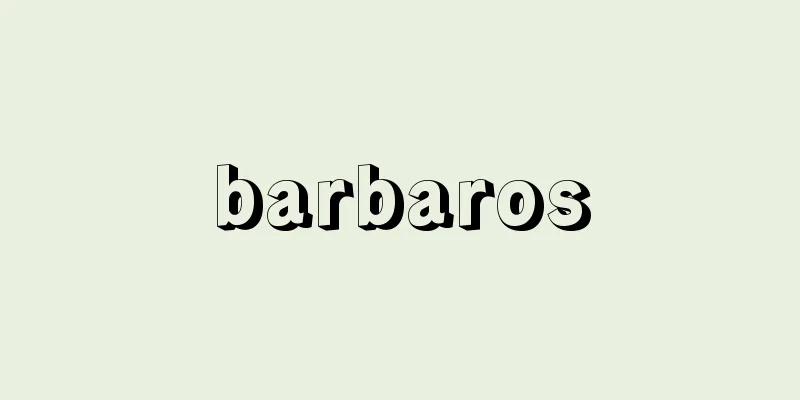
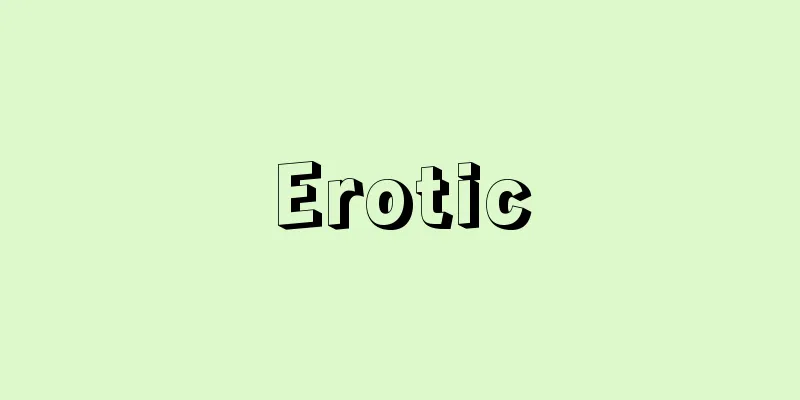

![Family inheritance - Kazokuseshuzaisan (English spelling) Familienfideikommisse [Germany]](/upload/images/67cb3599b2083.webp)
